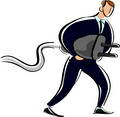» Home Electrical Wiring
» Electrical Wiring Directory
» Residential Home Wiring Diagrams
» Need Electrical Help? Ask the Electrician
» Residential Home Wiring Diagrams
» Need Electrical Help? Ask the Electrician
National Electrical Safety
 |
|
|
|
|
| Use all appliances and equipment according to the manufacturer’s instructions. | |
| Inspect and Replace damaged electrical equipment or have it repaired by a qualified electrician or a repair center. | |
| Never overload power strips and surge suppressors. | |
| Only use extension cords that are the right wire gauge and insulation type. If an appliance does not allow the use of an extension cord then do not use one. | |
| Use ground fault circuit interrupter (GFCI) protection on all electrical outlets located near water sources such as bathrooms, kitchens, fountains and swimming pools. | |
| Only purchase electrical appliances and equipment tested and approved by an independent testing laboratory such as Underwriters Laboratories (UL). | |
| Keep your body, arms, long handled tools, saws, ladders, pool tools, lumber and anything that reaches above your head at least 10 feet away from overhead power lines. | |
| Call 811 before you dig. If you’re planting bushes or trees or just digging a hole for a fence post, call 811 at least two days ahead of time. It’s a free service that notifies utilities to come to your home and mark the location of their underground facilities like electric, gas, cable TV and water lines. | |
 |
|
 |
Electrical SafetyElectrical Safety Articles DirectoryElectrical SafetyHome Electrical Safety Checklist #1Electrical SafetyHome Electrical Wiring Safety Checklist #2 |
The Safest Way to Test Electrical Devices and Identify Electric Wires!The Non-Contact Electrical TesterThis is a testing tool that I have had in my personal electrical tool pouch for years, and is the first test tool I grab to help identify electrical wiring. It is a Non-contact tester that I use to easily Detect Voltage in Cables, Cords, Circuit Breakers, Lighting Fixtures, Switches, Outlets and Wires. Simply insert the end of the tester into an outlet, lamp socket, or hold the end of the tester against the wire you wish to test. Very handy and easy to use.
The Quickest Way to Check for Faulty Electrical Wiring!The Plug-In Outlet TesterThis is the first tool I grab to troubleshoot a problem with outlet circuit wiring. This popular tester is also used by most inspectors to test for power and check the polarity of circuit wiring. It detects probable improper wiring conditions in standard 110-125 VAC outlets Provides 6 probable wiring conditions that are quick and easy to read for ultimate efficiency Lights indicate if wiring is correct and indicator light chart is included Tests standard 3-wire outlets UL Listed Light indicates if wiring is incorrect Very handy and easy to use.
Strip Off Wire Insulation without Nicking and Damaging the Electric Wire!The Wire Stripper and Wire CutterMy absolute favorite wire stripping tool that I have had in my personal electrical tool pouch for years, and this is the tool I use to safely strip electrical wires. This handy tool has multiple uses: The wire gauges are shown on the side of the tool so you know which slot to use for stripping insulation. The end of the tool can be used to grip and bend wire which is handy for attaching wire onto the screw terminals of switches and outlets.. The wire stripper will work on both solid and stranded wire. This tool is Very Handy and Easy to Use. |
||
Residential Electrical Parts and AccessoriesLight Switches 120volt Outlets Circuit Breakers Electrician Tools Voltage Testers |















